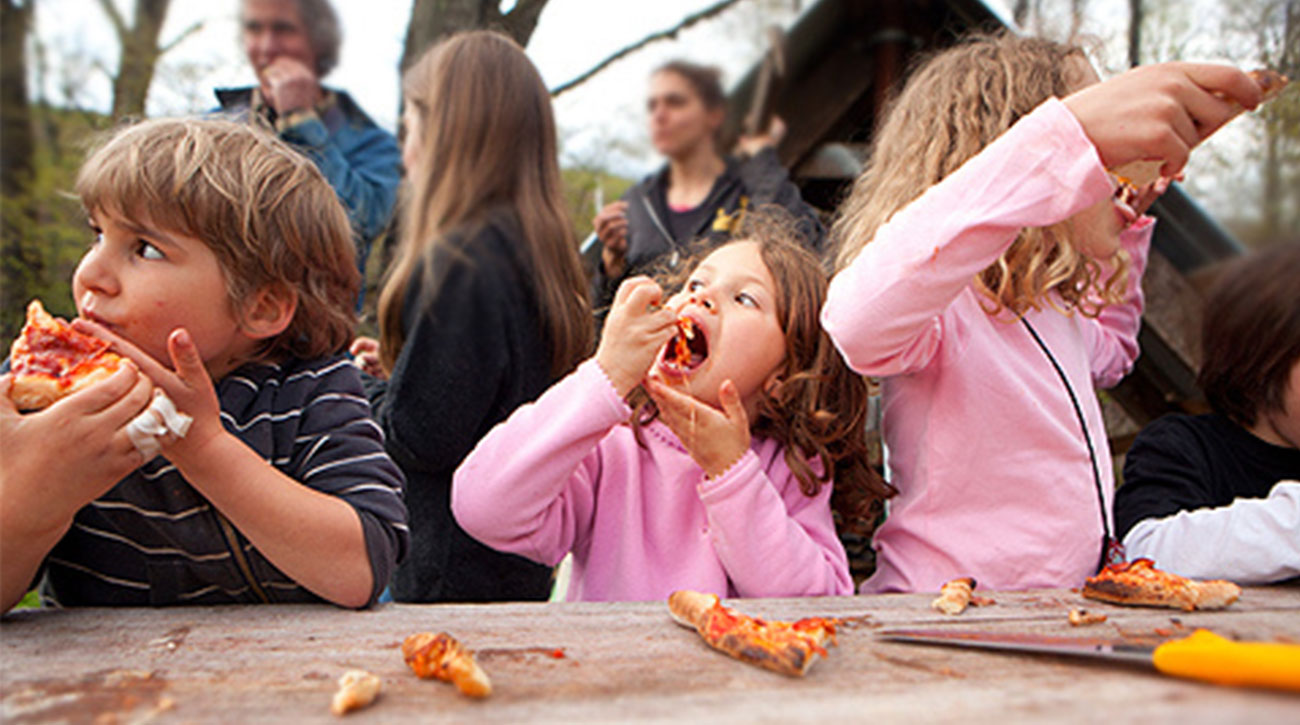Media Contact: Kathy Fackelmann, [email protected], 202-994-8354
WASHINGTON, DC (January 19, 2015) — Pizza has long been a favorite food and its popularity, especially as an after-school snack, continues to remain high in the United States. But is the pizza craze--especially when it represents almost a dietary staple for growing kids and teens--healthy?
On the days that kids and teens eat this food, they take in significantly more calories, fat and sodium compared to days when they don’t consume pizza, according to a new study by William H. Dietz, MD, PhD, the director of the Sumner M. Redstone Global Center for Prevention and Wellness at Milken Institute School of Public Health at the George Washington University. Dietz served as a co-author and Lisa Powell from the University of Illinois at Chicago was the lead author of the paper, which was published online January 19 in Pediatrics.
The research team examined dietary recall information for children age 2 to 11 and teens aged 12 to 19 from 2003 until 2010. They found that on any given day 20 percent of children and 23 percent of teenagers consumed pizza.
The team also found that consumption of pizza ramps up the total number of calories taken in for the day. For example, pizza day was associated with an increase in total daily energy intake of 84 calories, 3 grams of saturated fat and 134 milligrams of sodium for children. And for teens, the increase added up to an extra 230 calories, 5 grams of fat and 484 milligrams of sodium.
The extra calories and unhealthy saturated fat can add up to weight gain—especially because kids and teens don’t seem to compensate for the extra calories by cutting down on portion sizes.
“When pizza is consumed, it increases the total daily calories that children and adolescents take in and it appears to be a significant contributor to the obesity epidemic,” Dietz says. “Moderating pizza consumption should become another goal in our efforts to reduce obesity in US youth.”
Pizzas made with white flour, stuffed crusts and loaded with salty, high-fat toppings can be the worst offenders, Dietz says.
“It’s a very common and convenient food, so improving the nutritional content of pizza in addition to reducing the amount of pizza eaten could help lessen its negative nutritional impact,” Powell adds.
Pizza had the largest adverse impact when eaten as a snack in addition to regular meals, the authors of the paper said. Dietz says children and teens, often frequent fast food restaurants that are clustered around schools and they also get pizza on the school lunch line. Because kids and teens eat pizza from a variety of sources, including fast-food outlets, efforts must be made to improve the nutritional value of this food, he says.
Pizza joins other foods and beverages recently targeted by public health officials because they appear to contribute to the obesity crisis, especially in children and teenagers. For example, beverages containing sugar increase the risk of obesity, especially in children and adolescents who consume these drinks frequently, Dietz says.
The article, “Energy and Nutrient Intake from Pizza in the United States,” was published online January 19 and will appear in the February issue of the journal Pediatrics. The study was supported by the National Cancer Institute and the Robert Wood Johnson Foundation’s Bridging the Gap program.
About Milken Institute School of Public Health at the George Washington University:
Established in July 1997 as the School of Public Health and Health Services, Milken Institute School of Public Health is the only school of public health in the nation’s capital. Today, nearly 1,534 students from almost every U.S. state and more than 45 countries pursue undergraduate, graduate and doctoral-level degrees in public health. The school also offers an online Master of Public Health, MPH@GW, and an online Executive Master of Health Administration, MHA@GW, which allow students to pursue their degree from anywhere in the world.


